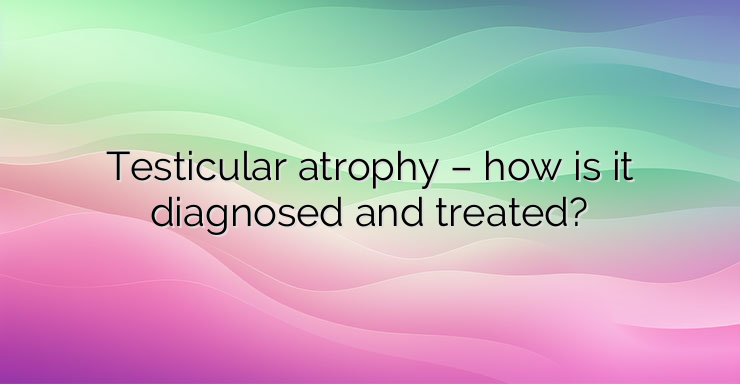What other causes of testicular atrophy are there? In addition to orchitis, some other factors can also cause testicular atrophy, these include: Age While women go through menopause, some men go through a similar process known as andropause. This causes low testosterone levels, which can lead to testicular atrophy. Varicocele Varicocele is enlargement and swelling of the veins of the scrotum. The condition usually affects the left testicle and can damage the seminiferous tubules that produce sperm in the testicles. This can make the affected testicle smaller. Testicular torsion This condition occurs when the testicle twists and turns, which can disrupt blood flow to the testicles and can cause pain and swelling. If not treated within a few hours, the condition can lead to permanent testicular atrophy. Testosterone Replacement Therapy (TRT) Some men undergoing TRT experience testicular atrophy. This is because TRT can stop the production of gonadotropin-releasing hormone (GnRH). Without GnRH, the pituitary gland stops producing luteinizing hormone (LH). And without LH, the testicles stop secreting testosterone, which leads to their atrophy. Use of anabolic steroids or estrogen Taking anabolic steroids or estrogen supplements can cause the same effect on hormones as TRT. Alcohol use Alcohol can cause both low testosterone and damage to testicular tissue, both of which can lead to testicular atrophy. How is testicular atrophy diagnosed? Testicular atrophy is diagnosed based on the anamnesis (medical history) and the patient’s clinical picture. The doctor will palpate (a physical examination that is based on the tactile sensation of touching the structures of the human body) the patient’s testicles, checking their size and hardness. Depending on the signs that are noticed, some tests may be ordered, including: Ultrasound of the testicles; Complete blood count; Testosterone level test How is testicular atrophy treated? Treatment for testicular atrophy depends on the cause of the condition. If it is due to a sexually transmitted infection (STI) or other infection, antibiotics are prescribed. In other cases, some changes in the patient’s lifestyle need to be undertaken. In rare cases, testicular torsion may require surgical treatment. Although conditions that can cause testicular atrophy are usually easy to treat, testicular atrophy itself is not always reversible. In many cases, early treatment increases the likelihood of recovery. This is especially important if testicular atrophy is due to torsion. Waiting more than a few hours to seek treatment can result in permanent damage. Bibliography: Healthline.Understanding Testicular Atrophy National Center for Biotechnology Information (NCBI). Primary and secondary testicular atrophy


Leave a Reply